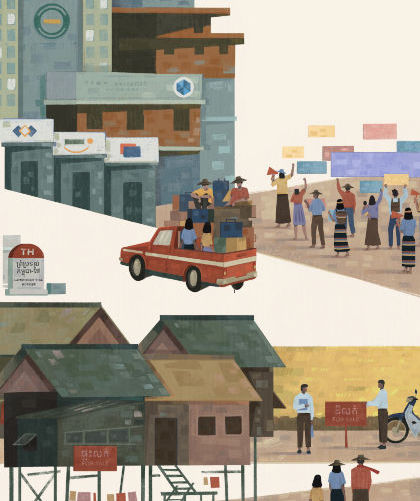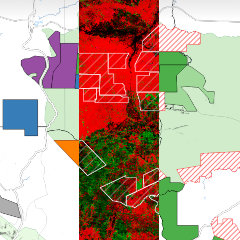World Day Against Child Labour
Published on 16 June 2010; Joint Organizations“When I was putting the soil into the mixing machine, the soil was stuck, so I tried to push it in, suddenly the machine caught my arm inside. After the incident, I returned to hometown to live with my single father and three younger brothers. I need to look after all of them because my father is mentally weak. I am so hopeless and my dreams are also destroyed, as I am disabled and uneducated. I don’t know what I can do besides tending cows every day. I left school when I was in grade 1 before I went to work in the brick factory.”
A 16-year-old boy who lost his left arm while he was working in a brick factory.
LICADHO and World Vision Cambodia will mark World Day Against Child Labour on June 12, 2010, by organizing a street march and local concert in Sangke District, Battambang. The event aims to sensitize the public on the issues of child labour, particularly on child labour in brick factories. The event will take place between 3 p.m. and 9:30 p.m.
The Battambang concert will include drama performances, songs and comedy shows. The goal is to inform Cambodians about the worst forms of child labour and their consequences on the health, safety and education of children. This is the second time that LICADHO and WVC have conducted such a public event under the core theme “I protect children, do you?” in Battambang province.
The event is part of joint project between LICADHO and World Vision Cambodia to reduce the worst forms of child labour set forth in ILO Convention 182. According to research commissioned by LICADHO and World Vision Cambodia in 2007, there were between 400 and 500 children working in brick factories in Battambang province during the high labour-demand season.
The most common tasks for children in brick factories are pulling brick wheelbarrows, loading bricks in and out of the kiln, loadings brick onto and out of brick wheelbarrows, loading bricks onto trucks, and arranging bricks to dry. Some children also work as brick machine operators or firing kiln workers. Child workers are employed in three possible classifications: work on a contract, daily full-time work, or part-time/weekend work. Despite the harsh conditions, many employers are suspected of hiring children to work in brick factories. Some children are even sent to the factories by their parents. The practice of hiring children for work in brick factories has far-reaching effects on child development, especially on schooling and health.
“Brick factories are among the worst possible places for children to work,” said LICADHO Director Naly Pilorge. “They of course have a negative impact on children’s schooling and social development, but they also bring with them an incredibly high risk of hazards, including death.”
The research also found that child workers in brick factories typically begin work at an early age, particularly those who live at the factory compounds. About 57% of children living in brick factories started to work before the age of 12, while 25.7% started working between age 6 and 8. Among those who do not live in brick factories, 21.8% started to work under age 12, while 44.6% started to work at age 12 to 14, and 33.7% started to work at age 15. The majority of child workers in brick-making factories were not in school.
“Although the issue of children working in brick factories has been publicized, the practice continues to this day,” Pilorge said. “Clearly more outreach and education is needed to put an end to this heinous practice.”
Members of the public, local media, and international media are invited to attend the march and concert and join us in combating the worst forms of child labour.
For more information, please contact:
▪ Mr. Im Norin, Children's Rights Advocacy Campaign Coordinator, LICADHO, 017 283 323
PDF: Download full statement in English - Download full statement in Khmer







